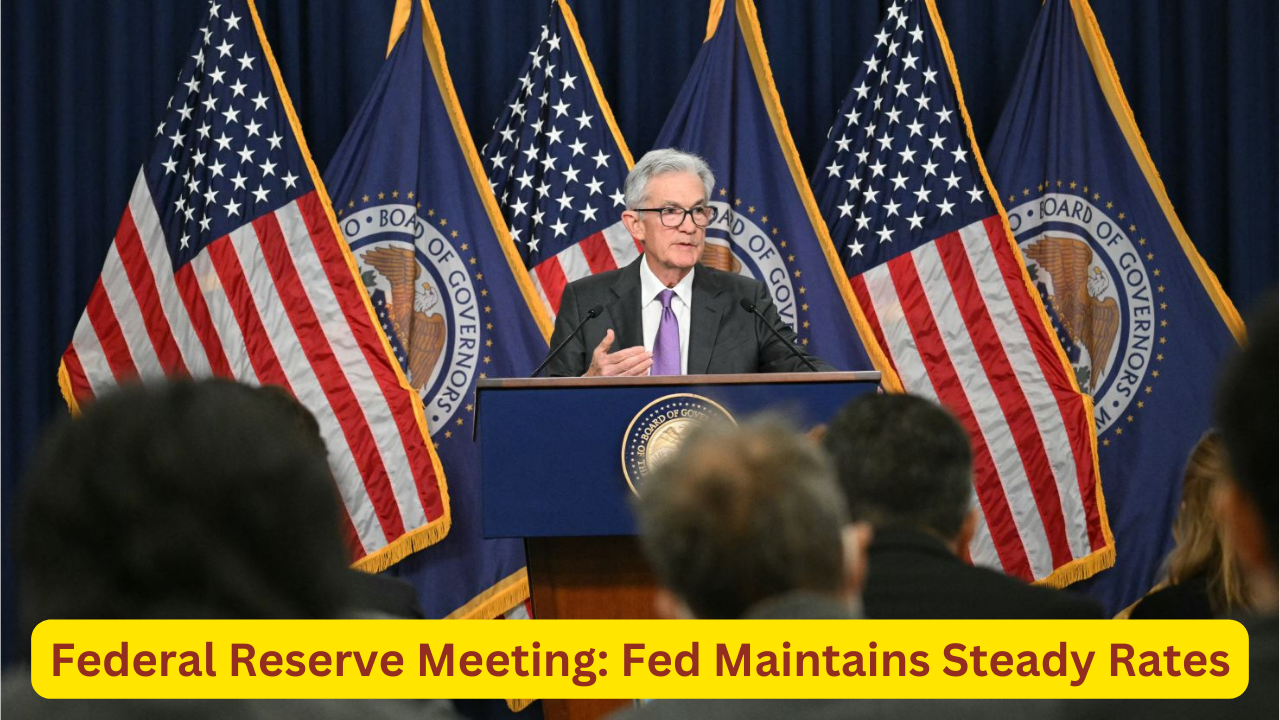During its fifth continuous meeting, the Federal Reserve held its benchmark interest rate constant on Wednesday. The central bank is waiting for further information to assess when rate reductions should take place.
Over the past few years, the Fed has been raising rates quickly in an attempt to counteract the greatest inflation in decades. However, while the US economy continues to grapple with high interest rates and rampant inflation, Fed Chair Jerome Powell stated that the central bank is not yet ready to ease borrowing costs.
Wall Street anticipates that the first rate cut will come in the warmer months.
The difficult issue facing the Fed is striking a balance between the potential negative effects of reducing prematurely or too late. Therefore, the timing of this first rate cut is crucial, as it could either negate the progress made by the Fed if implemented too soon or fail to prevent the economy from rapidly deteriorating if delayed too long.
On Wednesday, the Fed released additional updated economic forecasts. They suggest that authorities at the central bank anticipate a less significant rate cut in the upcoming years than they did in December. While most Fed policymakers continue to anticipate three rate cuts this year, they now see fewer reductions in 2025 and 2026. Long-term interest rates are expected to be slightly higher than their December estimates.
Economic growth this year is also expected to exceed policymakers’ estimates.
Officials also signaled that they expect “substantial” progress on tapering asset purchases, a move aimed at ending the rise in prices of food and energy, to be more aggressive than previously thought this year.
US stocks soared to new highs on Wednesday, with the S&P 500 reaching 5,200 for the first time, up 0.9 percent. The Nasdaq Composite also hit a new record at 39,511.34, gaining 401 points or 1 percent. The tech-heavy Nasdaq climbed to 16,369.41, also setting a new high.
Some key points from the latest Fed decisions are:

- – It remains to be seen whether inflation has peaked.
- – Powell stated, “We’re making good progress in bringing inflation down,” but it’s clear that there is some persistent pressure on prices in the housing and services sectors.
- – The Fed might be concerned as it faces the final stages of its historic battle against inflation. According to the latest Consumer Price Index, significant increases in shelter and gas prices pushed consumer prices higher in February.
- – The Fed chief reiterated that a return to 2 percent inflation could be challenging.
- – Powell said in a post-meeting press conference on Wednesday, “We have nine months of inflation at 2.5 percent; now we have a couple of months that look more like inflation than they look like slack.” “Now, there’s some noise here, and the question is, is it more than noise? And we can’t know that, and that’s why we’re watching it carefully.”
- – Economists prefer to look at several months of data to smooth out month-to-month volatility and gauge any sustained trends. Thus, the Fed is approaching the current situation with inflation cautiously, awaiting further data to confirm whether inflation has truly subsided. Powell also noted that some “seasonal effects” could disrupt January’s figures.
- – When asked about the role of rising shelter costs in driving up inflation, Powell said, “There’s some confidence that low rental vacancy rates we’re seeing will eventually come out in the wash, but there’s some uncertainty about when that will happen.”
- – The Fed remains in a wait-and-see mode, with Chair Powell highlighting the risks of cutting too late versus cutting too soon. “It’s a judgment call,” Powell said. “Fortunately, with the economy strong, the labor market strong, and inflation moving down, we can afford to be patient and let the data do the talking.”
- – Powell also said that policymakers “want to feel more confident” that inflation is on a path to sustainably reaching the central bank’s – 2 percent target. The Fed’s policy statement also underscored this point.
- – “The Committee expects that it will be appropriate to maintain the current target range until it is confident that inflation is consistently running at 2 percent,” it said.
- – The economy remains on a solid foundation, according to Powell.
- – He said, “The economy is strong, the labor market is strong, and inflation is coming down.”
- – According to the latest projections from the Atlanta Fed, economic growth in the first quarter is expected to register a healthy 2.1 percent annualized rate, which is above the robust 3 percent seen in the previous three months.
- – Job openings continue to outpace hiring, with employers continuing to add jobs at a brisk pace while unemployment remains low. – – Unemployment rose from 3.7 percent to 3.9 percent in February, but it remains below 4 percent for over two years.
- – Goldman Sachs Chief Economist Jan Hatzius recently told CNN that “it doesn’t seem like the economy is anywhere near a recessionary footing.”
- – If labor market weakness turns out to be less than expected in the coming months, it could alter the path of monetary policy.
- – “If you look at it historically, we’re pretty high,” said Atlanta Fed President Austin Goldsby, speaking to CNBC earlier this month. “As long as we stay on this path – if inflation keeps coming down – we’ll have to start thinking about the labor market side of the mandate.”





